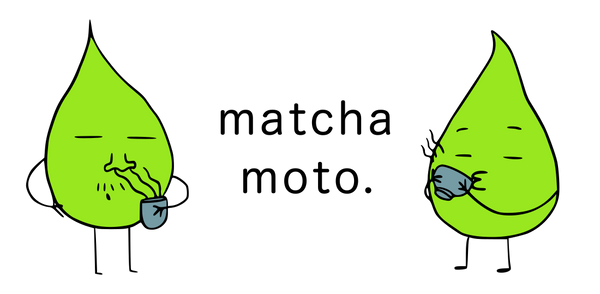Matcha FAQ
Share
Are you new to drinking matcha, and not sure where to start? Or are you an experienced matcha drinker, and want to learn more about how to get the best possible quality?
There is a lot of confusion about it on the internet. If you want "just the facts", start here.
How do I know how good a matcha product is?
One common misconception about matcha is that there are only two grades, culinary and ceremonial. But in fact, there are several more grades than this. Consequently, a ceremonial-grade product is not necessarily the highest quality matcha. Sometimes, a matcha dealer will not disclose this to you, because they can make extra money by selling you a lower quality "ceremonial" product.
Our philosophy is simple: the highest quality matcha should be available at a reasonable price. That means with Matcha Moto, you pay for matcha, and not the hype. Our ceremonial grade matcha is the highest grade of ceremonial matcha, and our culinary grade matcha is the highest grade of culinary matcha. No deception, and no corner cutting.
Where does matcha come from?
Matcha is typically grown in Japan in one of its several tea-growing regions, such as Shizuoka, Kagoshima, Mie, Miyazaki, and Uji (Kyoto).
Matcha Moto sources its tea leaves from the Kagoshima region, renowned for its high quality tea and volcanic soil.
How is matcha made?
Our matcha is made from one of several varieties (cultivars) of green tea leaves. It's grown in the shade to induce the leaves to produce more chlorophyll, giving the matcha leaves their extraordinarily green color. After the harvest, the leaves are sorted into several different grades according to color, aroma and taste. They are then steamed and air-dried. After this step, the tea leaves are called tencha.
Once the stems and veins are removed, the leaves are slowly ground in granite stone mills, to avoid over-heating the leaves. This ensures that they retain their aroma and flavor.
Matcha can be made from several green tea varieties (cultivars), and can be grown using either organic or non-organic farming techniques.
Matcha Moto is made mostly from leaves grown on farms using organic farming techniques. This means that no pesticides or synthetic chemical fertilizers are used in its production. Our ceremonial grade comes from the highest grade of ceremonial matcha selected at the sorting stage, and our culinary grade is selected from the highest grade of culinary matcha at that stage.
Is organic matcha worth it?
It depends on what you're looking for, but we think it is. One of the main reasons for getting into matcha is for its health benefits, including its high antioxidant content. When you drink non-organic matcha, you're usually consuming a product that was grown with synthetic chemical fertilizers and pesticides, and the effects of this on the human body are arguably negative. In our opinion, for the health-conscious matcha consumer, this is an unnecessary risk. However, some people do prefer non-organic matcha products, because they're cheaper and also have a stronger taste and brighter color due to the strength of non-organic fertilizers.
Our mission is to provide the highest possible quality of matcha, and to do so at the best possible price, but we are also concerned about the health of our consumers, and include this when considering product quality. That's why Matcha Moto has decided to provide all organic products - we want our customers to have peace of mind.
Should I be concerned about radiation?
Yes, it's a good idea make sure to check with your matcha provider to see if they have a certificate of analysis for their product. This is a certification showing that the product contents have been tested by a laboratory, and that the product is not contaminated by radiation.
All Matcha Moto requests certificates of analysis for all of its products to ensure that they are radiation and contaminant free.
How do you make matcha?
Unlike regular teas, matcha doesn't require any steeping time. For best results, whisk together a teaspoon or so of matcha and a small amount of hot water in a matcha bowl, using a bamboo whisk, until the matcha is dissolved into a thick consistency (this helps ensure your matcha doesn't have grains or clumps).
Then, slowly add about a cup or less of hot water, whisking in circular and back-and-forth motions to build up the foam. After preparing the matcha, you can also add milk and sweeteners. (You might want to do this with a different stirrer, so that your whisk stays in good condition.)
What's special about matcha?
With high levels of theanine, antioxidants, and caffeine, matcha makes you feel alert, relaxed, and rejuvenated.
Do you have wholesale pricing?
Yes. Please reach out by email for wholesale inquiries, and we will get back to you as soon as possible.
